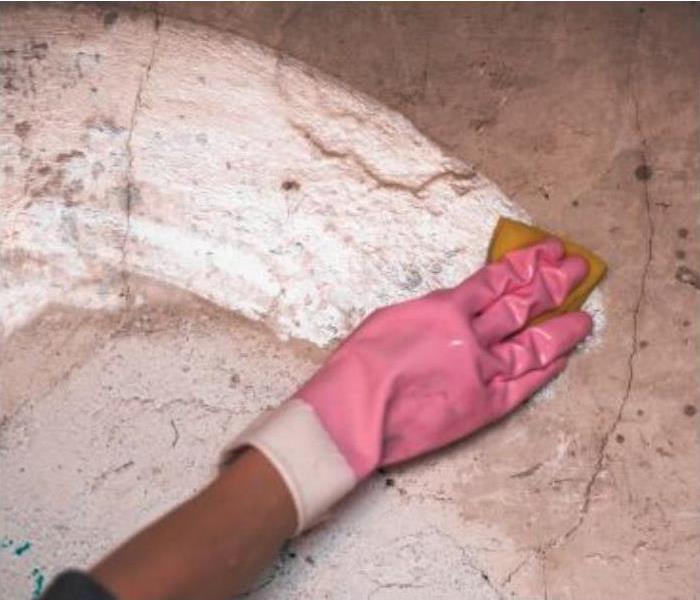How to Clean Smoke Damage on Walls and Ceilings?
4/30/2024 (Permalink)
If you've experienced fire damage in your home or business, dealing with the post-fire period can be overwhelming. Smoke damage on walls and ceilings is a common issue after a fire, but knowing how to properly clean it can make a big difference. In this blog post, we'll guide you through the process of cleaning smoke damage step by step, using basic materials and tools that you likely already have at home. If you have experienced Weymouth fire damage and are looking for professional help, keep reading to learn more.
Signs of Fire Damage on Walls and Ceilings
Before you start cleaning, it's important to identify the signs of fire damage on your walls and ceilings. Common signs of fire damage include:
- Discoloration: One of the most obvious signs of fire damage is discoloration on walls and ceilings. Soot and smoke residue can leave behind dark or blackened patches, contrasting with the original color of the surfaces.
- Strong Odor: Another indication of fire damage is the lingering smell of smoke. Even after the visible soot has been removed, the odor can persist, indicating the presence of smoke particles embedded in the surfaces.
- Gritty Texture: Soot residue often leaves a gritty or powdery texture on walls and ceilings. Running your fingers along the surfaces may reveal a rough or abrasive feel, signaling the presence of smoke residue.
- Staining: Fire damage can manifest as visible stains on walls and ceilings. These stains may vary in intensity, ranging from light smudges to heavy, greasy deposits, depending on the severity of the fire and the materials burned.
- Soot Trails: Soot particles can travel along air currents during a fire, leaving behind distinctive patterns known as soot trails. These trails may appear as streaks or smudges on walls and ceilings, indicating the pathways taken by smoke during the fire event.
Now that you have seen the most common signs of water damage, the next challenge is to find out the best way to remove soot or strong unpleasant odors.
How to Clean Smoke Damage on Walls and Ceilings?
From gathering the important materials to using the proper techniques, we'll guide you through each stage to ensure thorough restoration and safety. Let's dive into refreshing your walls and ceilings from the effects of smoke damage.
Cleaning Materials and Tools Needed
Before cleaning, you need to gather the materials and tools to use. Here’s the list of things you’ll need:
- Chemical sponge
- HEPA vacuum cleaner
- Cleaning solutions such as vinegar, baking soda, rubbing alcohol, or hydrogen peroxide
- Detergent or degreaser
- Commercial air scrubbers
Steps
Now that you have your tools ready you are probably asking: How to remove soot from your walls and ceilings? So, let's delve into the steps for cleaning smoke damage on walls and ceilings! A tip: Start with ceilings before moving on to walls.
- Safety First: Before you begin cleaning, ensure proper ventilation by opening windows or using fans, and adhering to the fire safety protocols. Also, wear protective gear such as gloves and a mask to avoid inhaling soot particles.
- Dry Cleaning: Start by using a chemical sponge to gently wipe away loose soot from the walls and ceilings. Avoid pressing too hard to prevent smudging.
- Vacuuming: Use a HEPA vacuum cleaner to remove remaining soot particles from the surfaces. Be thorough, paying extra attention to corners and crevices.
- Wet Cleaning: Prepare a cleaning solution using one of the mentioned ingredients (vinegar, baking soda, rubbing alcohol, or hydrogen peroxide) mixed with water or detergent. Apply the solution to a clean cloth or sponge and gently scrub the affected areas.
- Rinsing: After scrubbing, rinse the walls and ceilings with clean water to remove any residue from the cleaning solution.
- Drying: Allow the surfaces to air dry completely or use fans to speed up the process.
- Odor Removal: After cleaning the smoke damage, use commercial air scrubbers or air purifiers to eliminate lingering odors from your walls and ceilings. These devices work to filter out airborne particles and neutralize odors, ensuring a fresh and clean environment.
Additional Tips
Here are some additional tips that you can take into account:
- Spot Test Cleaning Solutions: Before applying any cleaning solution to larger areas, test a solution on a small, less noticeable area to ensure compatibility with the paint or finish. This helps prevent unintended damage and ensures safe and effective cleaning.
- Avoid Ammonia-Based Cleaners: Avoid using ammonia-based cleaners when tackling smoke damage, as they can react with smoke residue and produce toxic fumes.
- Seal Unfinished Surfaces: If your walls or ceilings have unfinished surfaces, consider sealing them with a protective coating after cleaning to prevent future smoke damage absorption.
- Tackle HVAC Systems: Don't overlook your heating, ventilation, and air conditioning (HVAC) systems, as they can harbor smoke particles and distribute them throughout your home. Consider hiring a professional to inspect and clean your HVAC system to prevent recontamination of cleaned surfaces.
- Professional Help: If the smoke damage is extensive or if you're uncertain about the cleaning process, it's best to seek help from professional damage restoration contractors. Their expertise and specialized equipment can speed up the restoration process while ensuring optimal results and safety.
Contact SERVPRO of Weymouth, Hingham, and Quincy
Dealing with Weymouth fire damage and smoke damage on walls and ceilings can be challenging, but it is possible to restore your property to its pre-fire condition. For professional assistance, don't hesitate to contact SERVPRO of Weymouth, Hingham, and Quincy. Call us at (781) 337-0344 or submit our online form. We are here to offer 24/7 fire damage emergency services.






 24/7 Emergency Service
24/7 Emergency Service
